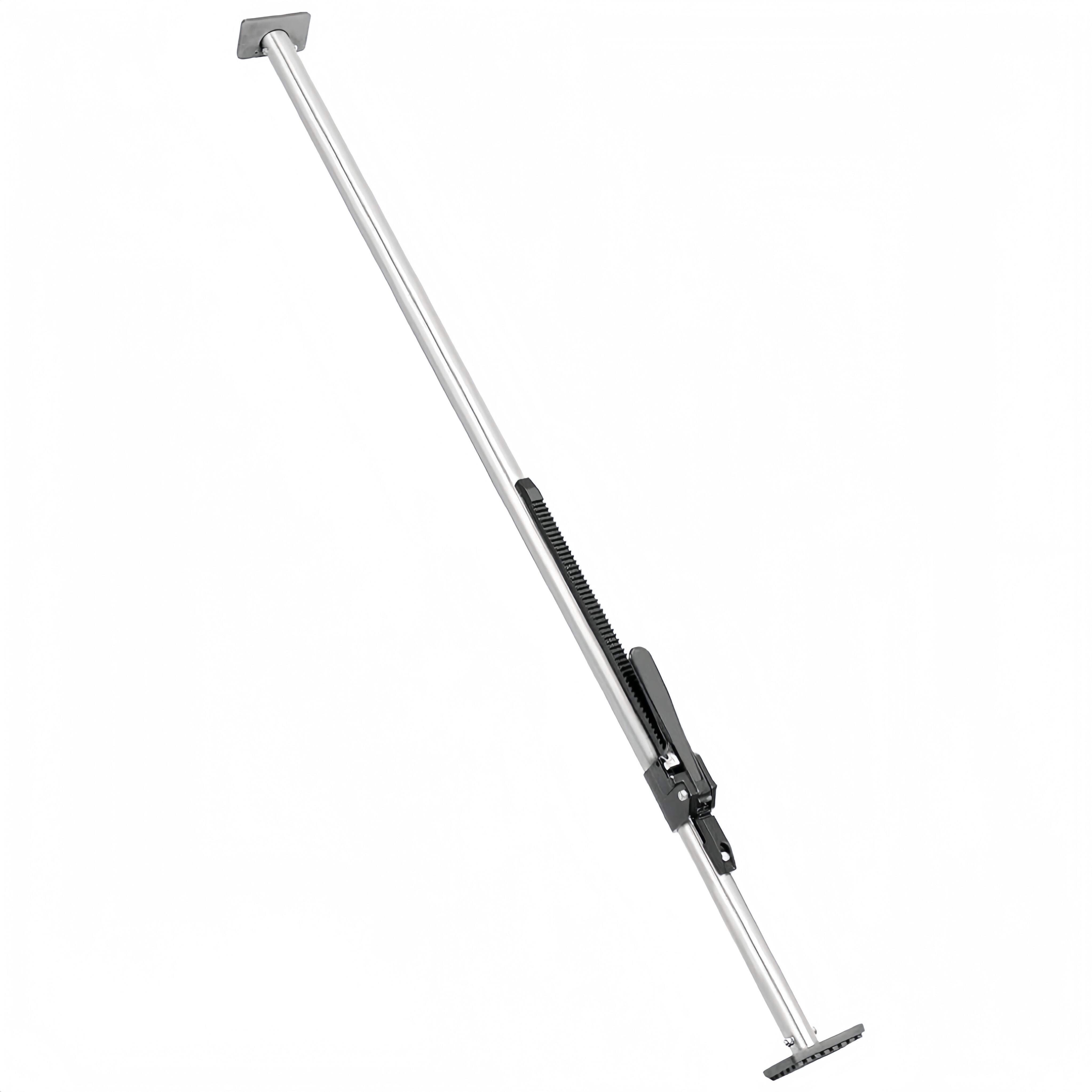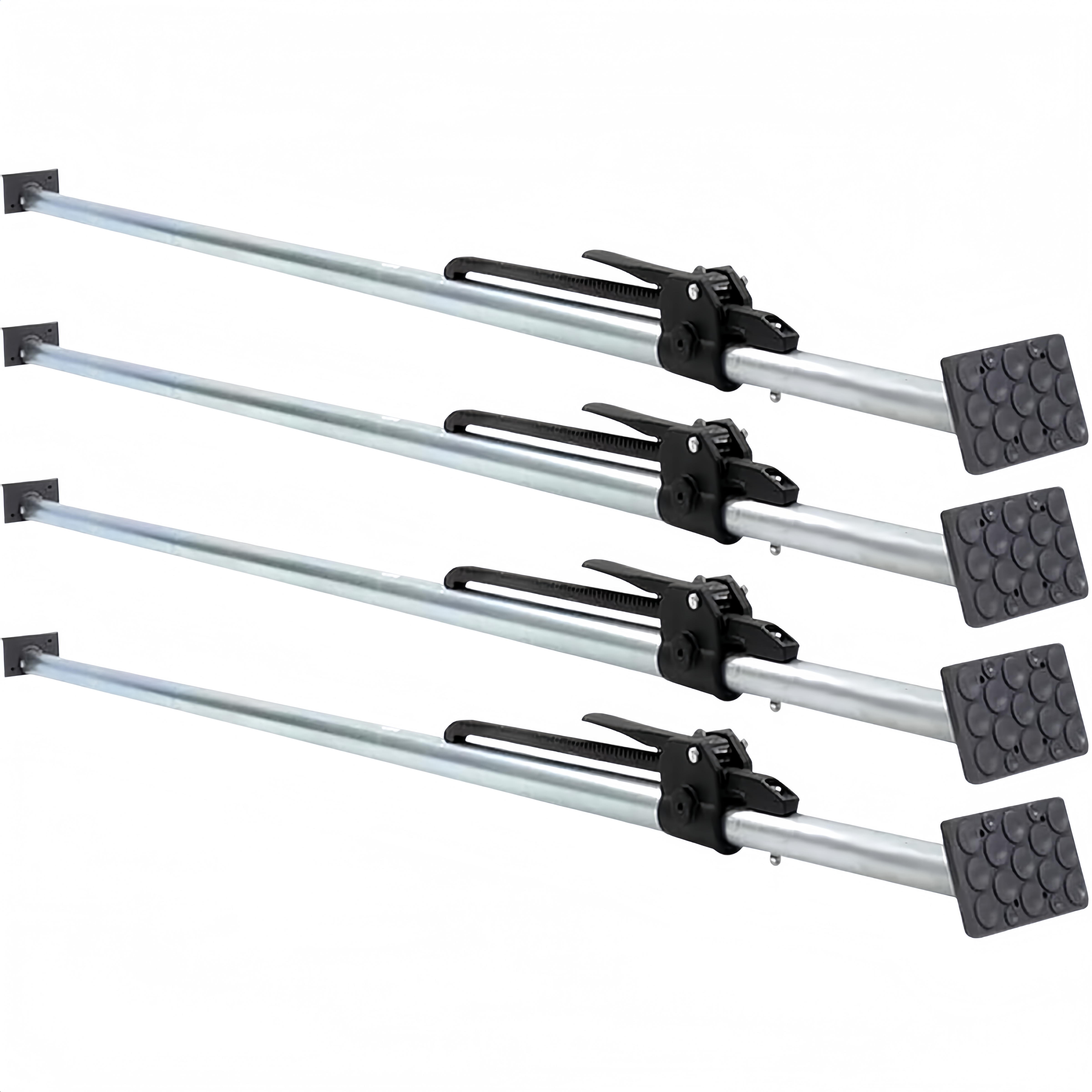Building Reliability in Cargo Transport
Efficiency in transportation is not just about moving goods quickly, but also about ensuring stability, reducing risks, and maintaining smooth operations. Cargo bars have become essential tools in the logistics industry because they prevent cargo from shifting during transit. This stability leads to fewer delays, less damage to goods, and greater driver confidence. As a result, businesses can save time, reduce costs, and enhance customer satisfaction. By incorporating cargo bars into transport operations, companies and individuals create a more reliable and efficient system for moving freight. The use of cargo bars reflects a proactive approach to logistics, where preparation and planning directly result in improved outcomes and a stronger competitive edge.
Role of Cargo Bars in Enhancing Efficiency
Reducing Delays During Transit
Delays often happen when cargo shifts, forcing drivers to stop and readjust the load. Cargo bars prevent this by keeping items firmly in place, ensuring that the journey continues without interruptions. This consistency not only improves delivery speed but also reduces fuel waste and labor costs. Imagine a delivery truck traveling across long distances without having to pull over multiple times—cargo bars make this possible by offering stability from the start to the finish of the trip. For businesses running on tight schedules, this reliability translates directly into improved performance and stronger customer trust.
Increasing Driver Confidence
Drivers who use cargo bars can focus more on safe driving instead of worrying about shifting loads. The peace of mind provided by secure cargo reduces stress, minimizes unnecessary stops, and enhances overall transport efficiency. When drivers know their cargo will remain stable even on sharp turns, sudden stops, or uneven roads, they are able to drive with greater concentration and efficiency. Over time, this not only improves delivery times but also promotes better driver satisfaction, which is crucial in an industry where fatigue and stress are common challenges.
Types of Cargo Bars for Different Applications
Adjustable Cargo Bars
Adjustable cargo bars are versatile and suitable for vehicles of different sizes. Their extendable design makes them ideal for businesses with varied fleets, reducing the need for multiple specialized tools. By easily adapting to different widths, they simplify operations and ensure consistency across different types of transport jobs. This adaptability helps companies cut costs and streamline logistics, while still maintaining the safety of goods being moved. For drivers handling different loads daily, the convenience of adjustable cargo bars is invaluable.
Heavy-Duty Cargo Bars
Heavy-duty cargo bars are designed for more demanding jobs. They can withstand higher pressures and loads, making them essential for transporting heavy or bulky items over long distances. Built with reinforced materials and stronger locking mechanisms, they provide unmatched stability in challenging conditions. Businesses that deal with industrial equipment, construction materials, or oversized shipments often rely on heavy-duty cargo bars to maintain safety and efficiency. Their durability ensures a longer lifespan, offering a strong return on investment.

Material Selection and Durability
Steel Cargo Bars
Steel cargo bars are strong and built for tough environments. They are a reliable choice for companies transporting heavy freight, as they resist bending and provide long-lasting durability. Steel’s robustness ensures that even in the most demanding conditions, cargo remains stable. While they may be heavier to handle, their strength makes them an irreplaceable option for certain industries. Companies looking for long-term reliability often choose steel cargo bars as part of their logistics strategy.
Aluminum Cargo Bars
Aluminum cargo bars are lightweight yet sturdy. They are easier to handle, making them a great choice for frequent loading and unloading, while still offering dependable cargo security. Because aluminum is resistant to rust and corrosion, these bars are particularly useful in environments where moisture or humidity is a concern. For companies prioritizing speed and convenience, aluminum cargo bars provide the right balance between strength and manageability, reducing worker fatigue while maintaining efficiency.
Features That Support Efficiency
Quick Locking Systems
Quick locking systems reduce setup time by allowing cargo bars to be secured in seconds. This speeds up daily operations and ensures drivers spend more time on the road and less time on preparation. In logistics where every minute counts, the ability to quickly adjust and lock a cargo bar can make a significant difference. These systems not only increase productivity but also lower the likelihood of errors, as they are easy to use even for less experienced staff.
Non-Marking End Pads
Non-marking end pads protect vehicle walls and interiors while maintaining a strong grip. This feature saves maintenance costs and keeps vehicles in better condition for longer use. Unlike rough or damaging grips, non-marking pads provide security without causing wear and tear. Over time, this reduces repair costs and extends the lifespan of transport vehicles, contributing to overall efficiency in fleet management. The simple addition of non-marking end pads reflects the thoughtful design behind cargo bars.
Applications of Cargo Bars in Logistics
Commercial Freight Transport
In commercial logistics, cargo bars improve efficiency by ensuring large shipments remain secure. This reliability minimizes damage claims and helps businesses meet delivery deadlines consistently. For companies moving goods daily, the reduced risk of accidents or cargo damage builds customer trust and enhances brand reputation. Cargo bars also reduce the amount of insurance-related issues, providing peace of mind for both logistics providers and their clients.
Household and Personal Use
For personal moves, cargo bars make transporting furniture, appliances, or boxes much simpler. By preventing items from sliding or tipping over, they reduce stress and speed up the moving process. Even in small-scale transport scenarios, cargo bars provide the same efficiency and peace of mind as in large logistics operations. For individuals, this means fewer broken items, smoother moves, and less time spent reorganizing cargo during travel.
Evaluating Cargo Bars Before Purchase
Considering Weight Capacity
Choosing cargo bars with the right weight capacity is crucial. Using bars that are too weak for the load risks failure, while stronger options provide lasting protection and efficiency. Businesses should carefully evaluate the average weight of their shipments and invest in cargo bars that match or exceed those requirements. This ensures that operations remain safe and reliable, regardless of the cargo type.
Checking Ease of Use
Cargo bars that are easy to install and adjust save significant time for drivers and logistics staff. Simple mechanisms improve workflows and reduce frustration during busy schedules. Ease of use also makes it possible for employees with less training to handle them effectively, reducing the dependency on specialized staff. This makes cargo bars an accessible solution for both large companies and small-scale movers.
Maintenance Practices for Cargo Bars
Routine Cleaning and Care
Regular cleaning removes dirt, rust, and buildup that could weaken cargo bars. With proper care, these tools last longer and remain dependable for repeated use. Routine maintenance not only extends their lifespan but also ensures consistent performance in securing cargo. For companies aiming to reduce replacement costs, this simple step can create long-term savings.
Inspections Before Use
Frequent inspections help identify signs of wear, such as cracks or weakened grips. Replacing damaged cargo bars before failure ensures safety and maintains efficiency in operations. A consistent inspection routine also builds a culture of safety within the workforce, reinforcing the importance of reliability in logistics. This proactive approach prevents accidents and creates smoother workflows across the supply chain.
FAQ
What types of vehicles can use cargo bars
Cargo bars can be used in trucks, vans, trailers, and even smaller delivery vehicles. Their adjustable nature makes them suitable for a wide range of transport applications, ensuring flexibility across different operations.
How often should cargo bars be replaced
Cargo bars should be replaced when they show signs of wear, such as bending, rust, or loss of grip. With proper care and routine inspections, many cargo bars can last for years, offering excellent long-term value.
Are aluminum or steel cargo bars better
The choice depends on the type of transport. Steel bars offer superior strength for heavy-duty applications, while aluminum bars provide a lightweight, corrosion-resistant option that is easier to handle during frequent use.
Do cargo bars really improve efficiency
Yes, cargo bars improve efficiency by preventing load shifts, reducing delays, protecting goods, and giving drivers greater confidence. They are simple tools that deliver significant advantages across the entire logistics process.
Table of Contents
- Building Reliability in Cargo Transport
- Role of Cargo Bars in Enhancing Efficiency
- Types of Cargo Bars for Different Applications
- Material Selection and Durability
- Features That Support Efficiency
- Applications of Cargo Bars in Logistics
- Evaluating Cargo Bars Before Purchase
- Maintenance Practices for Cargo Bars
- FAQ


